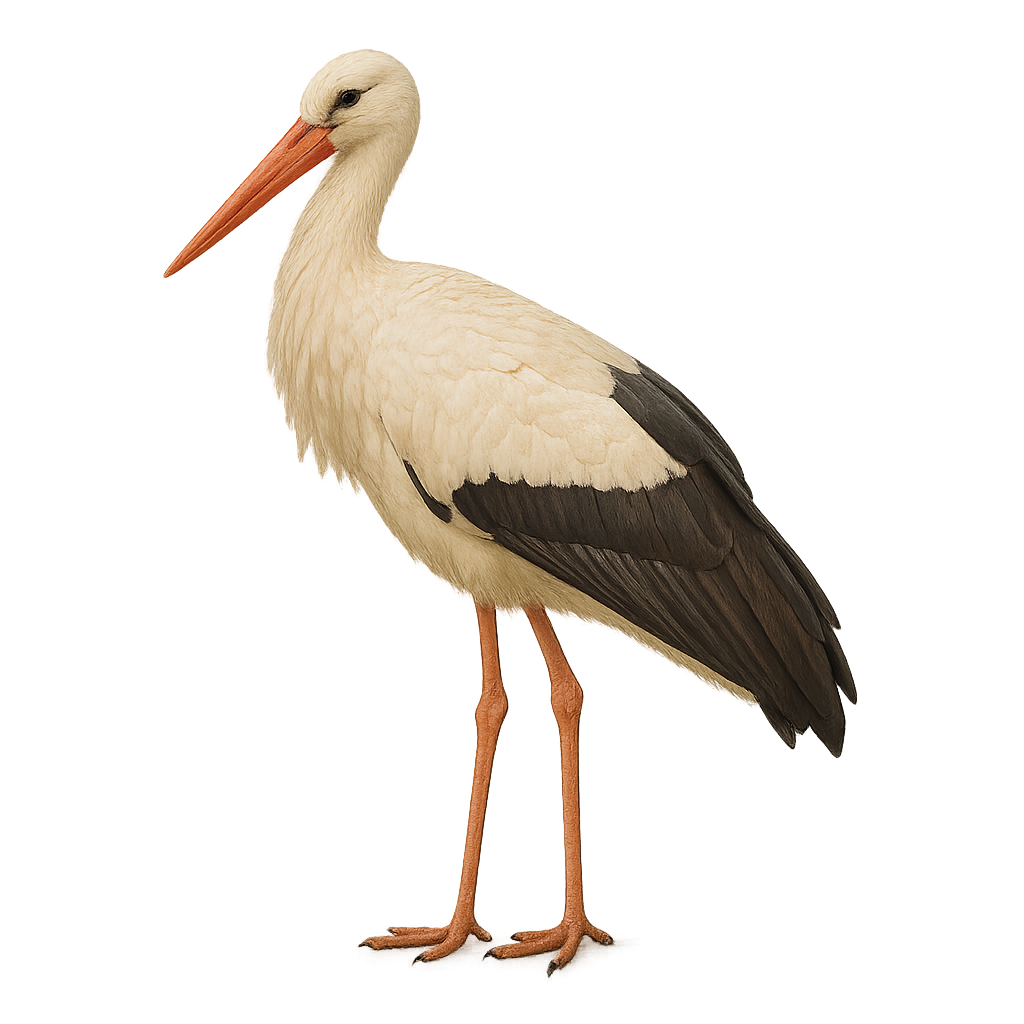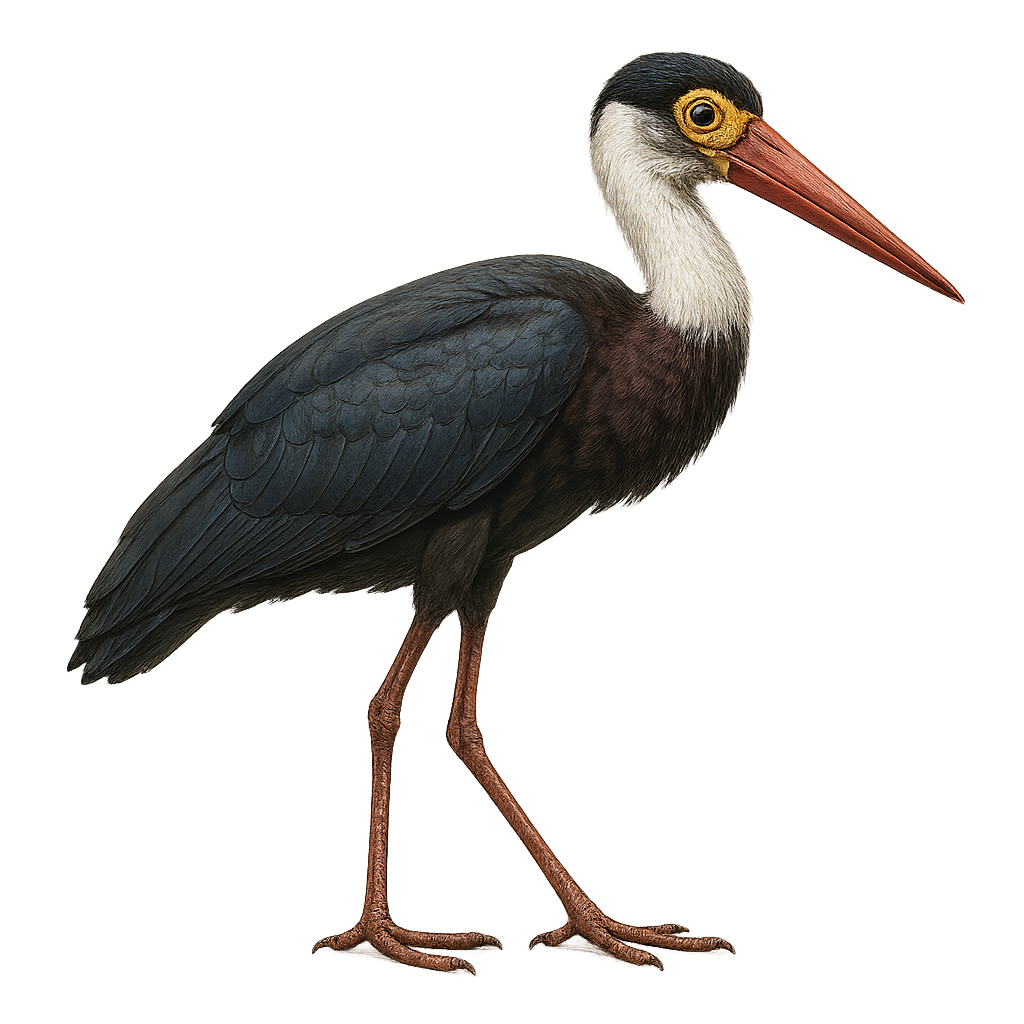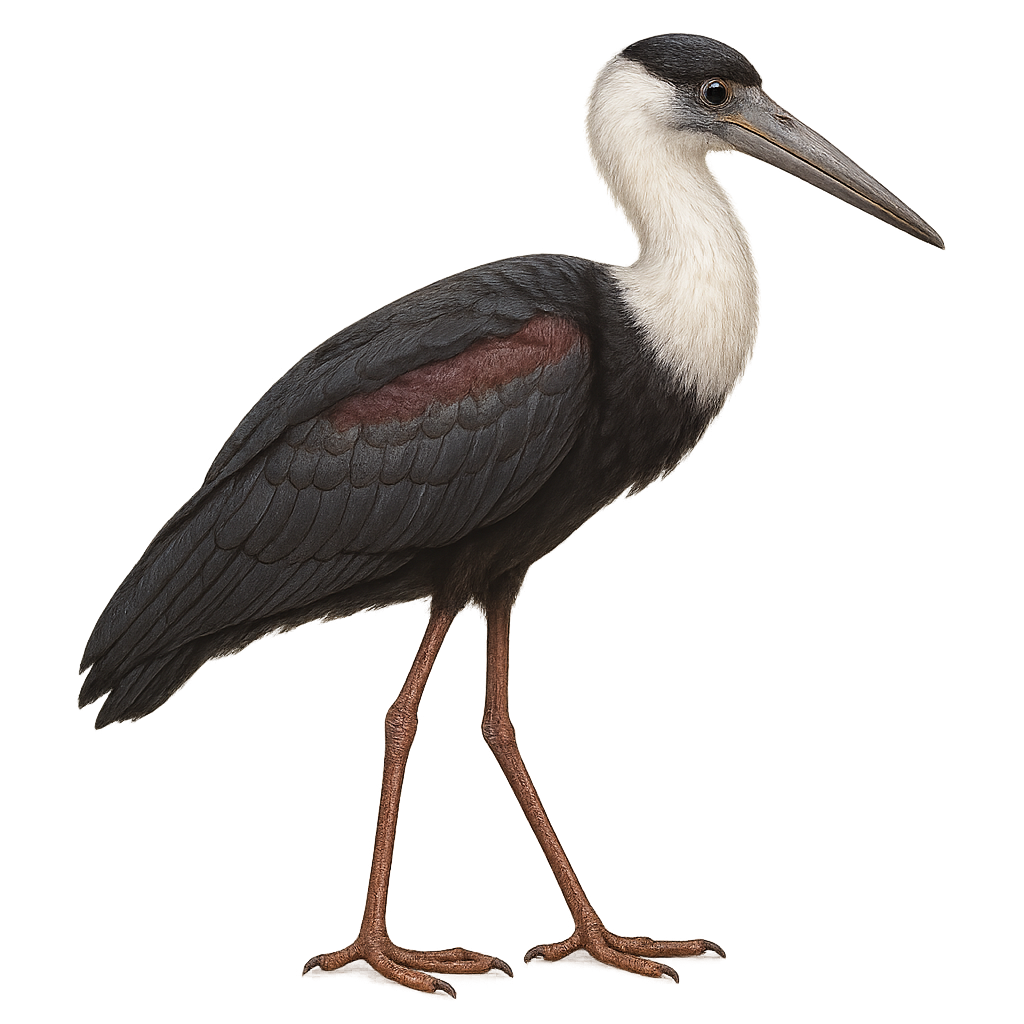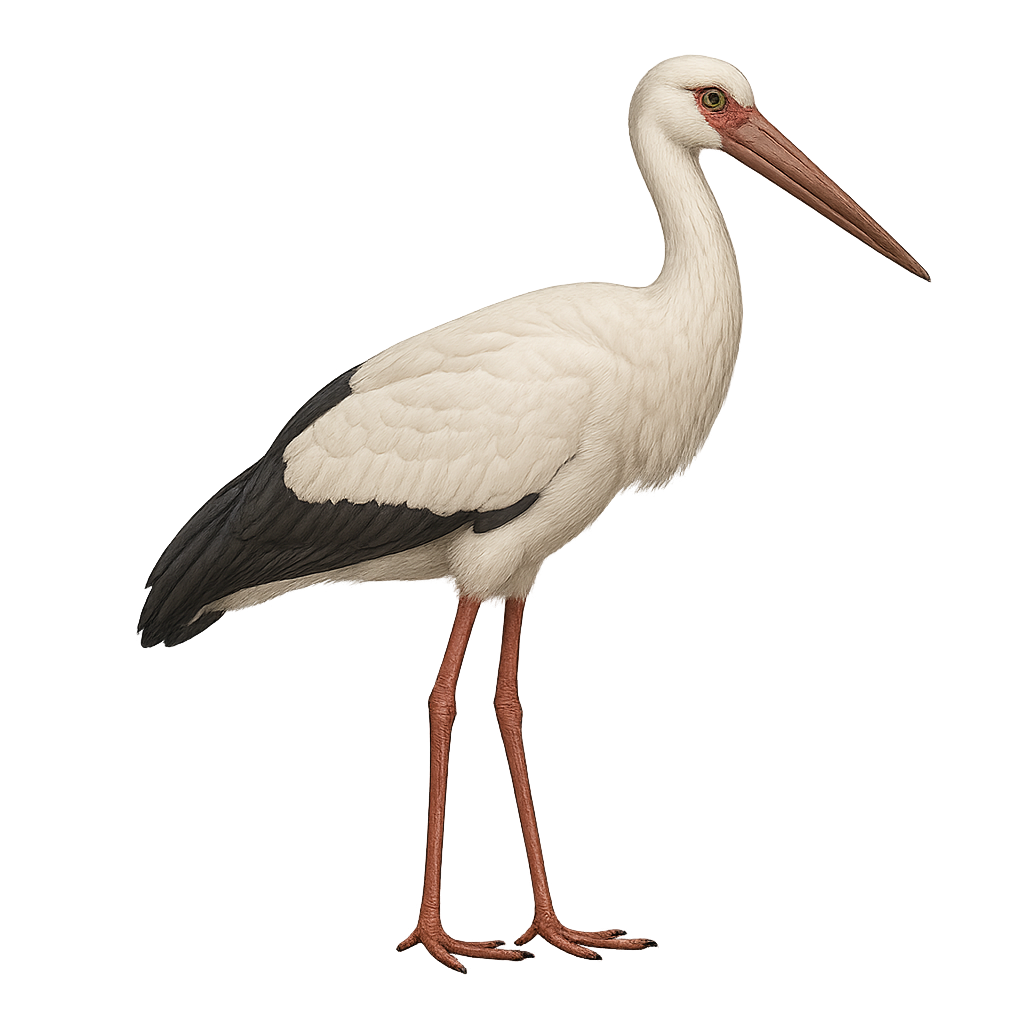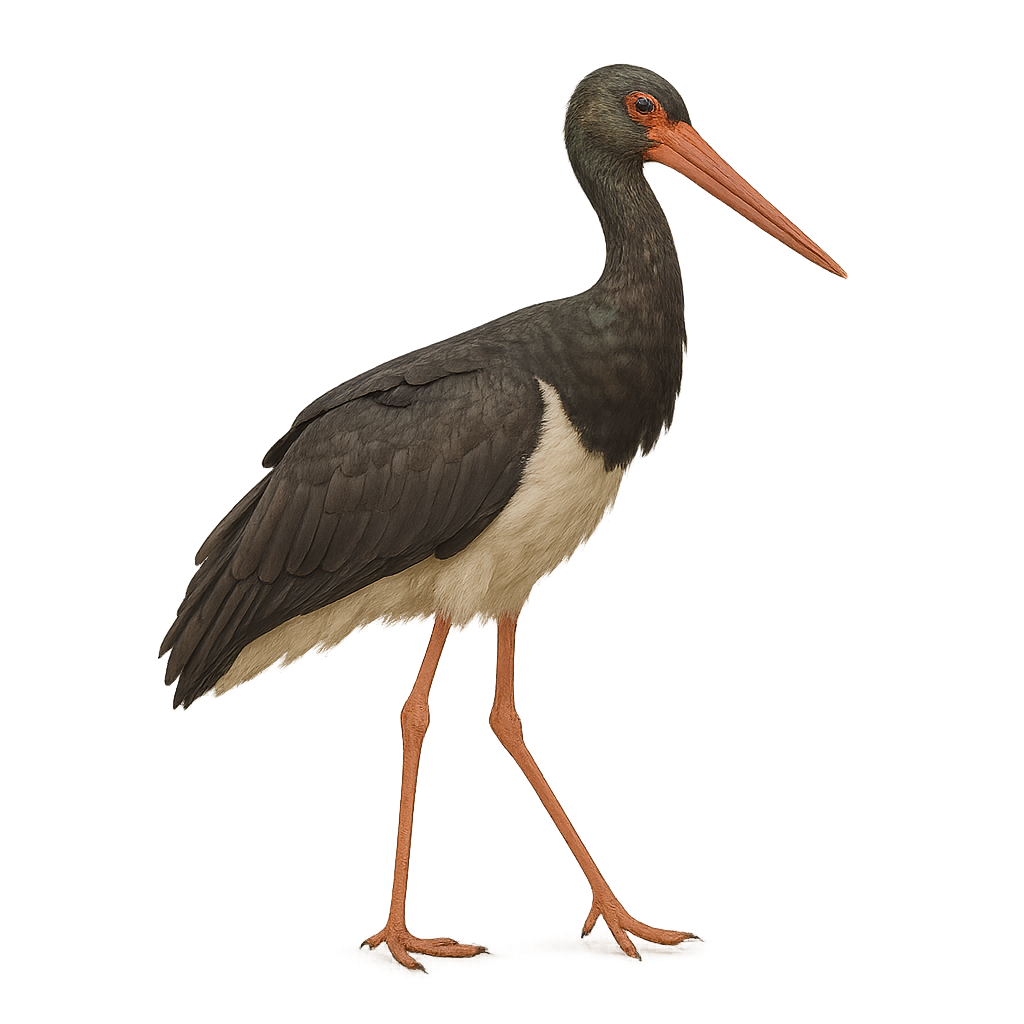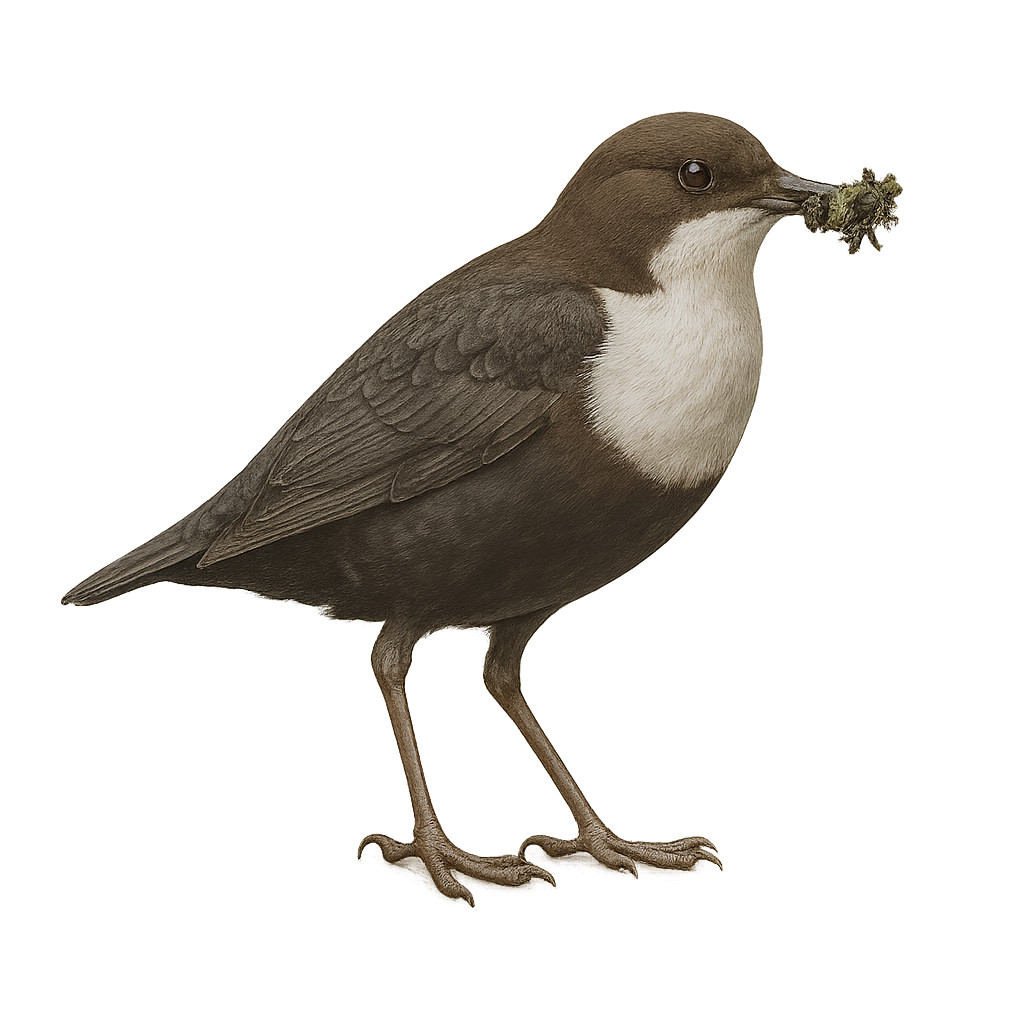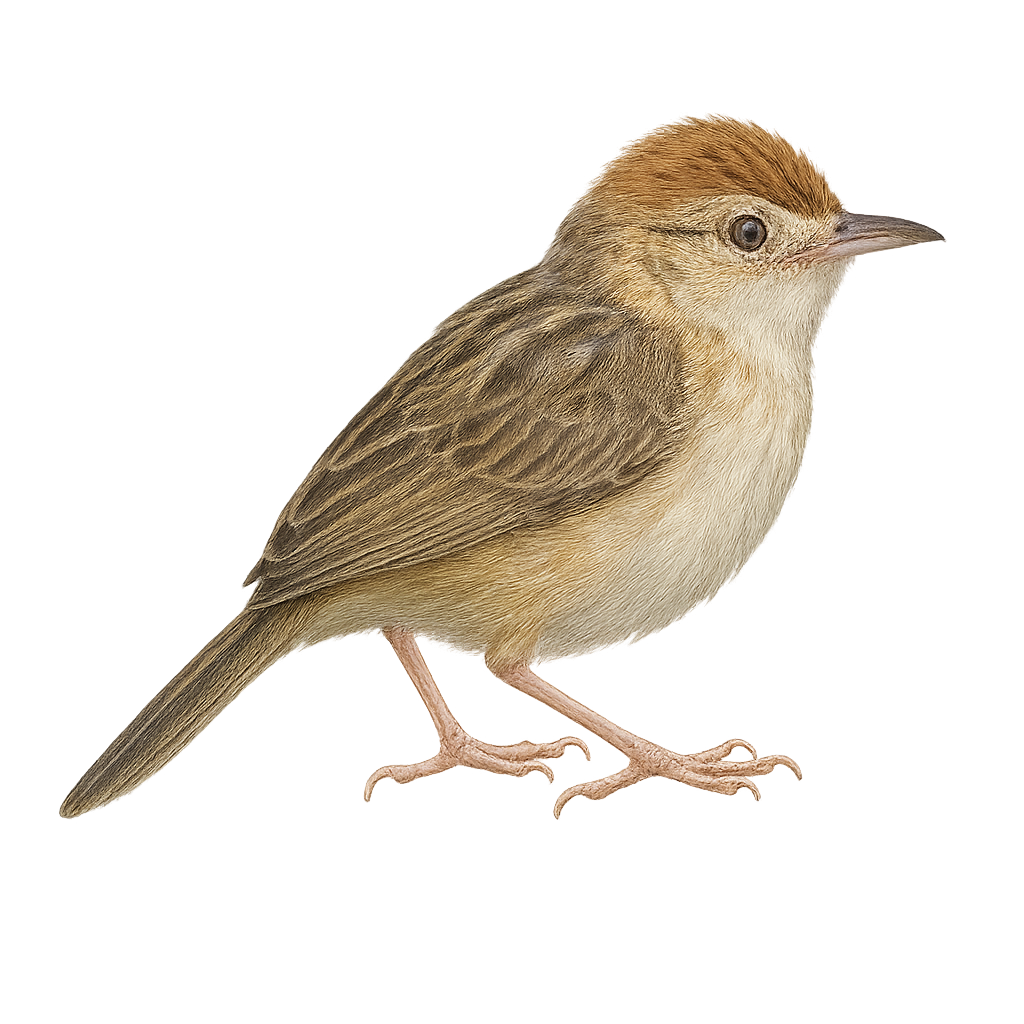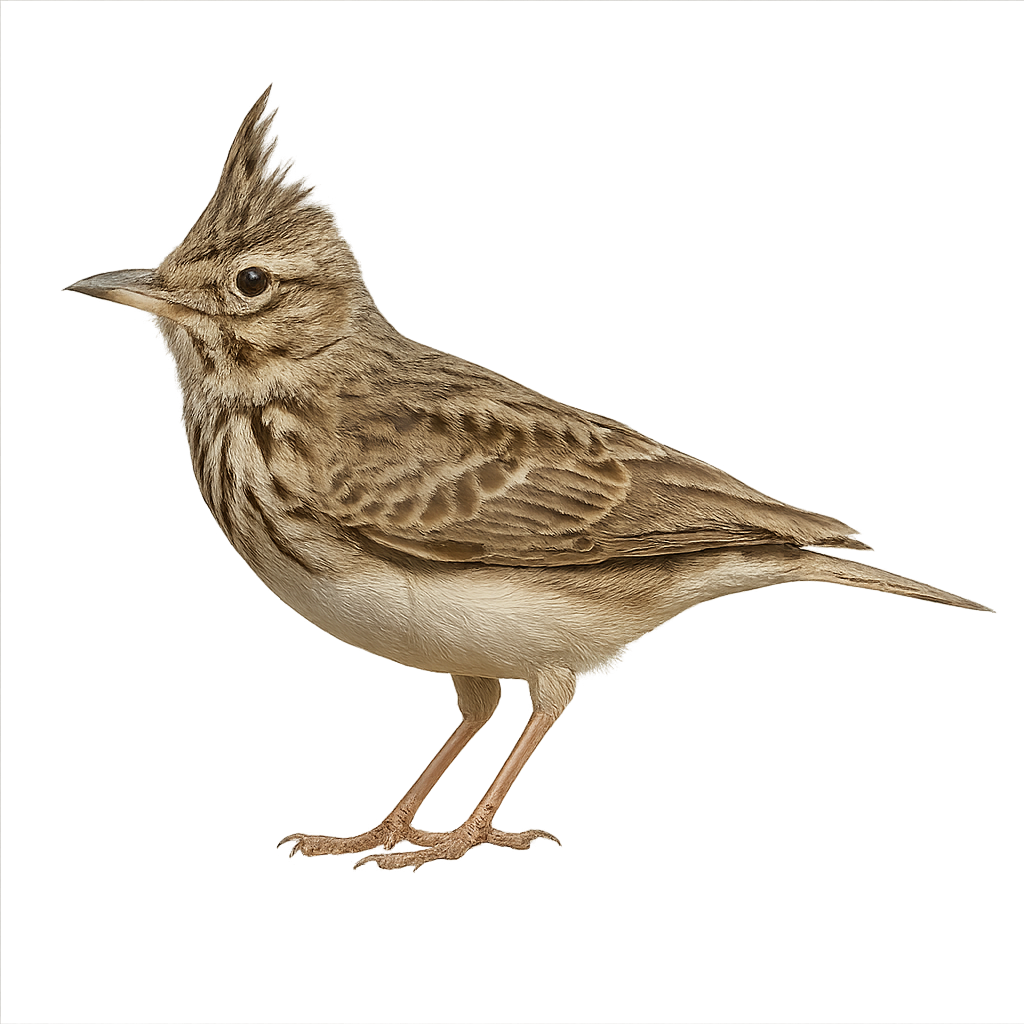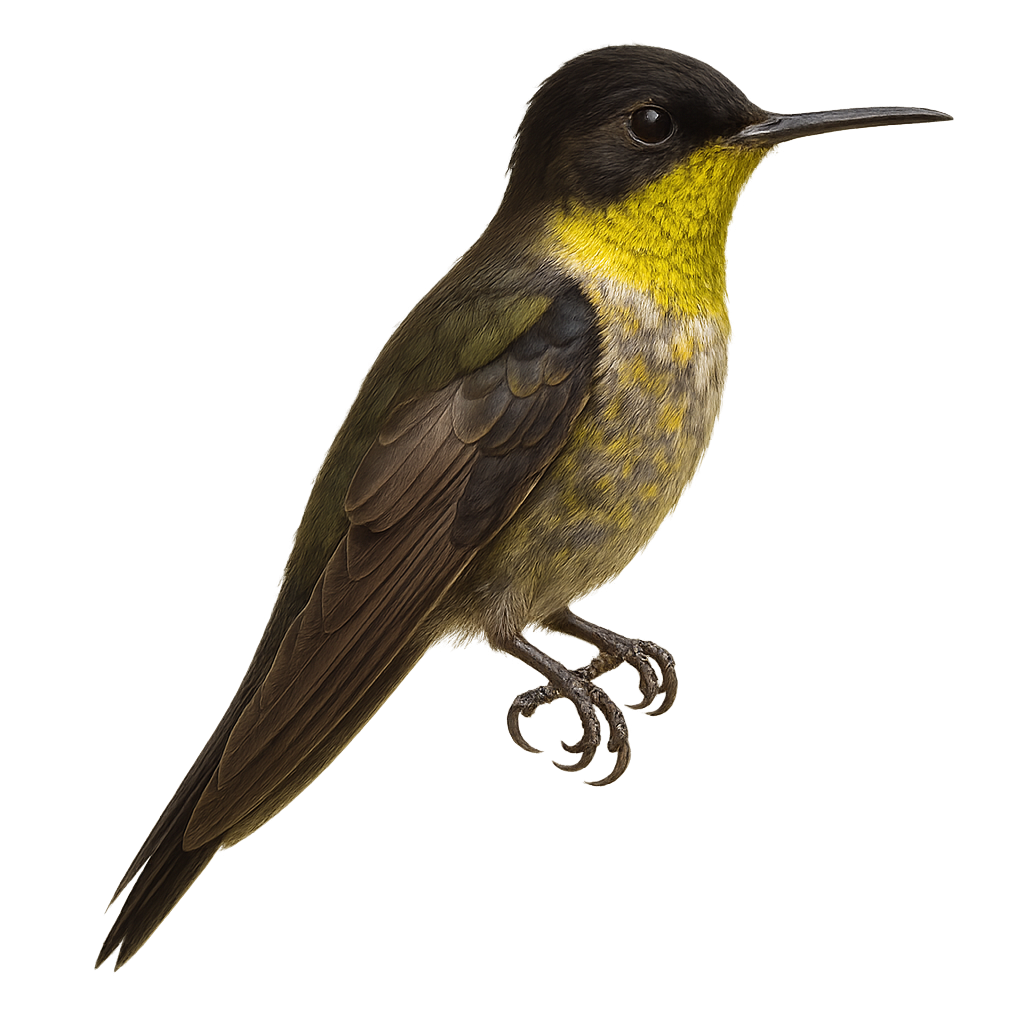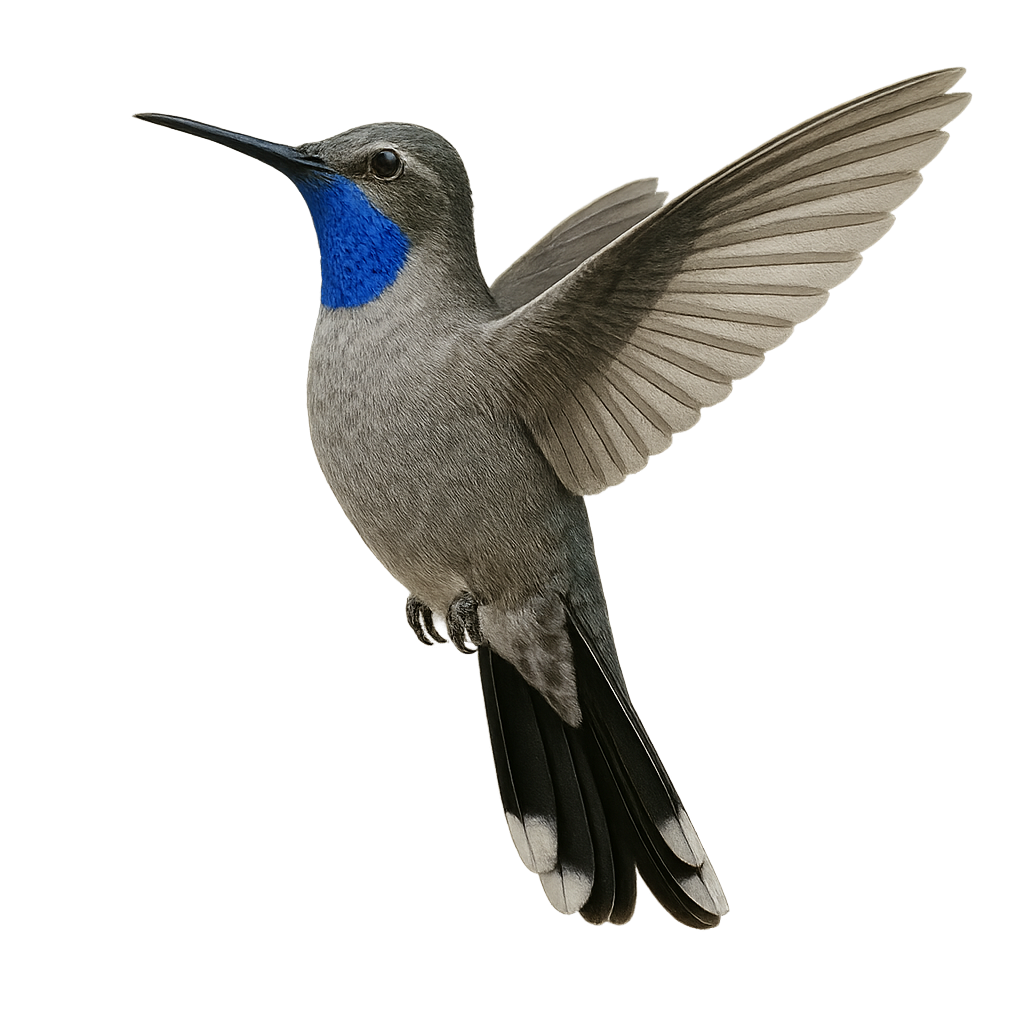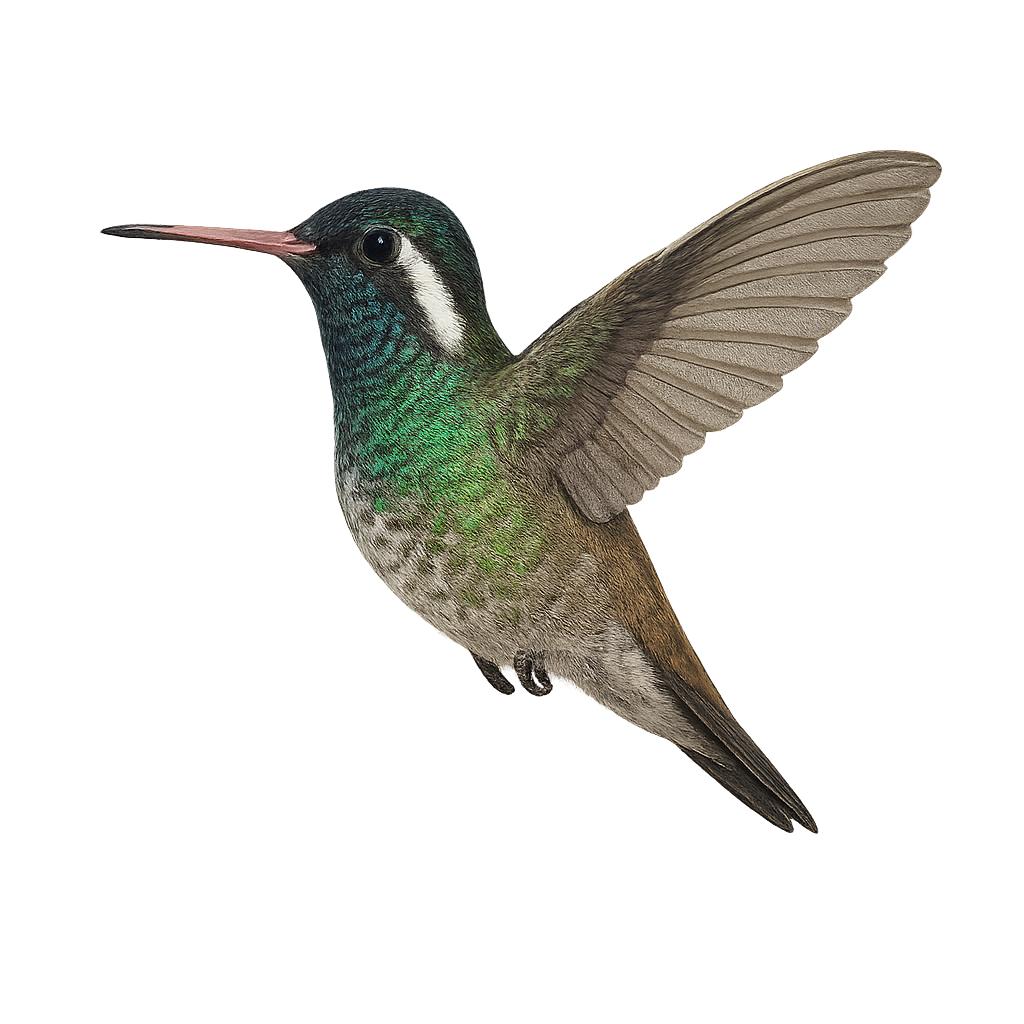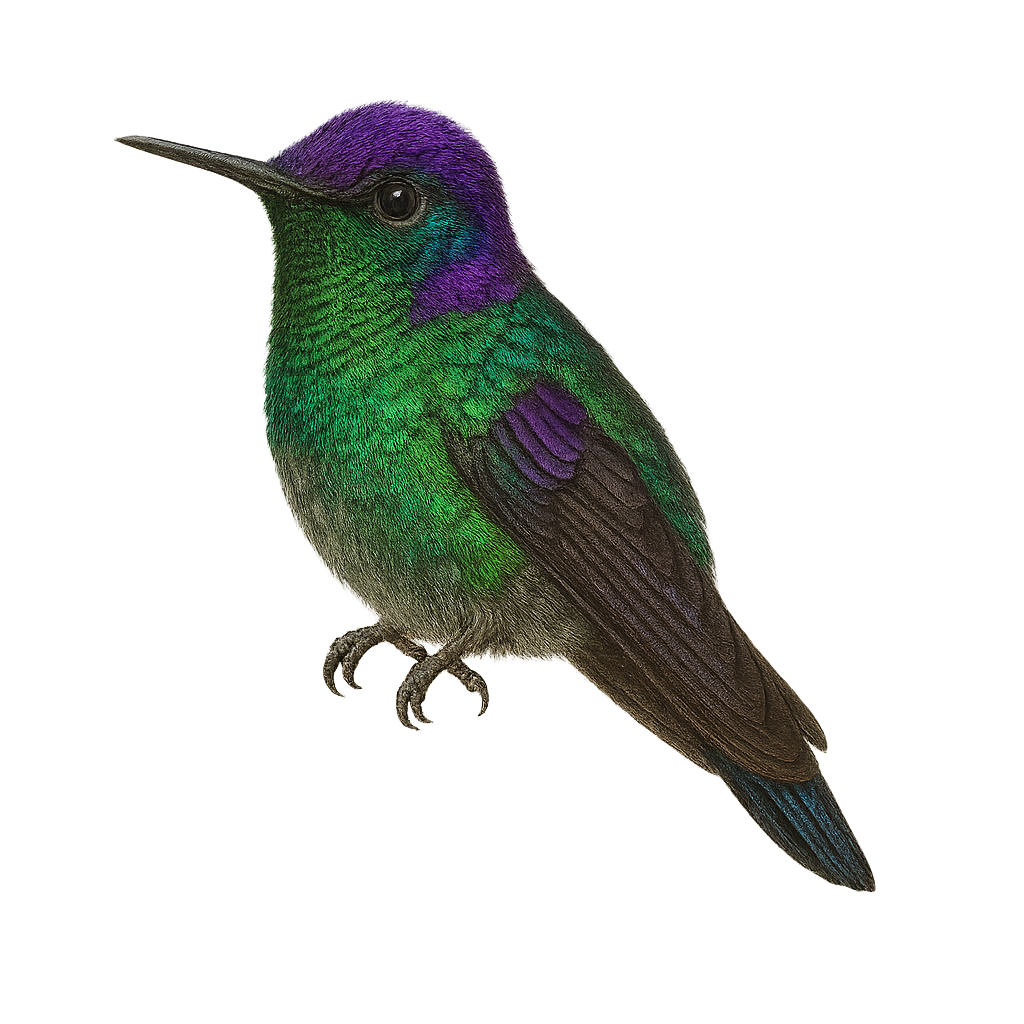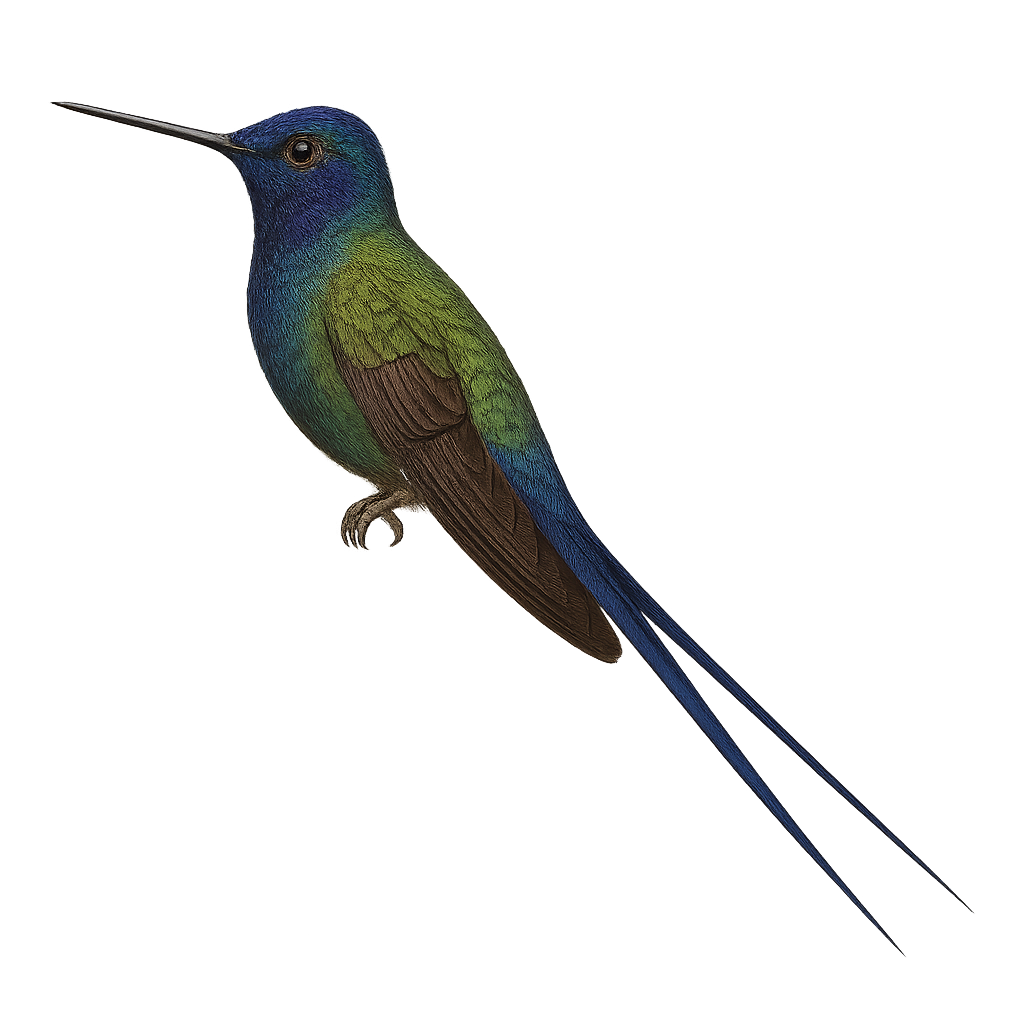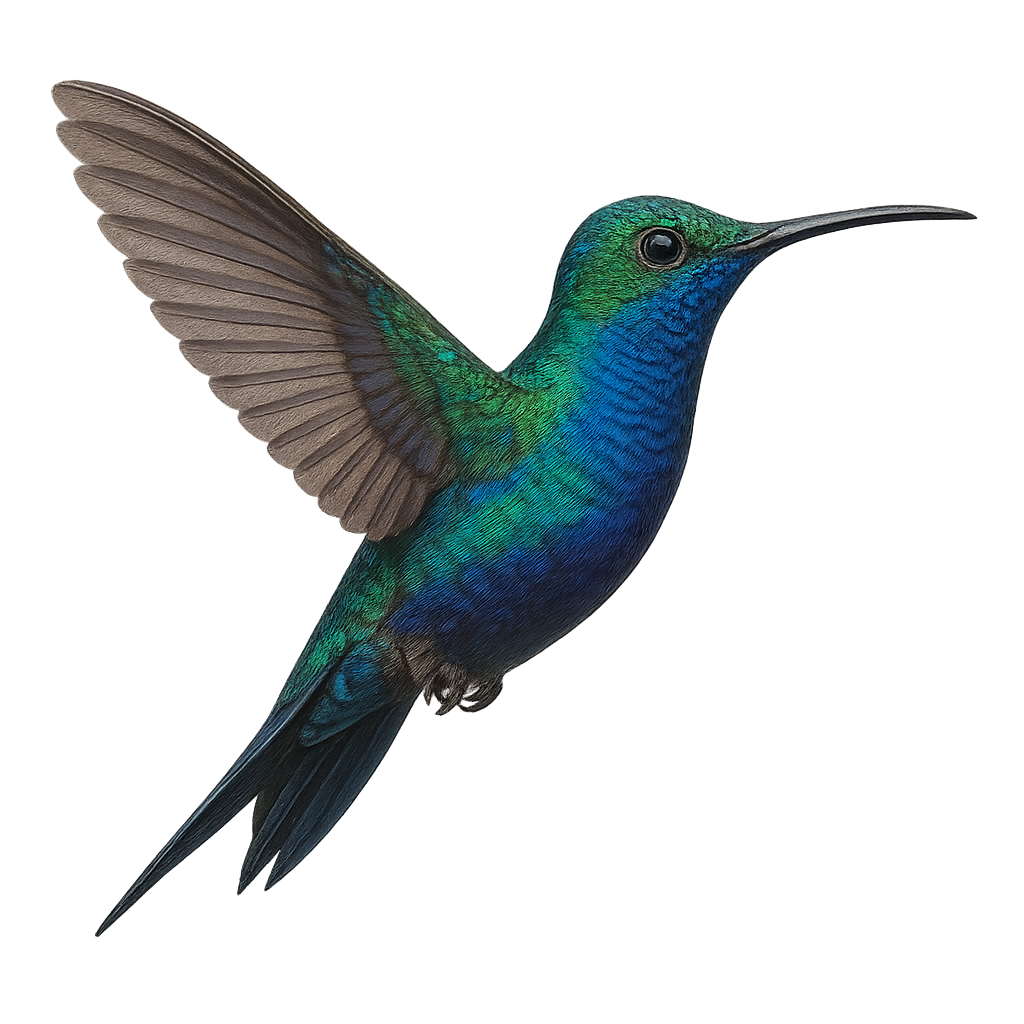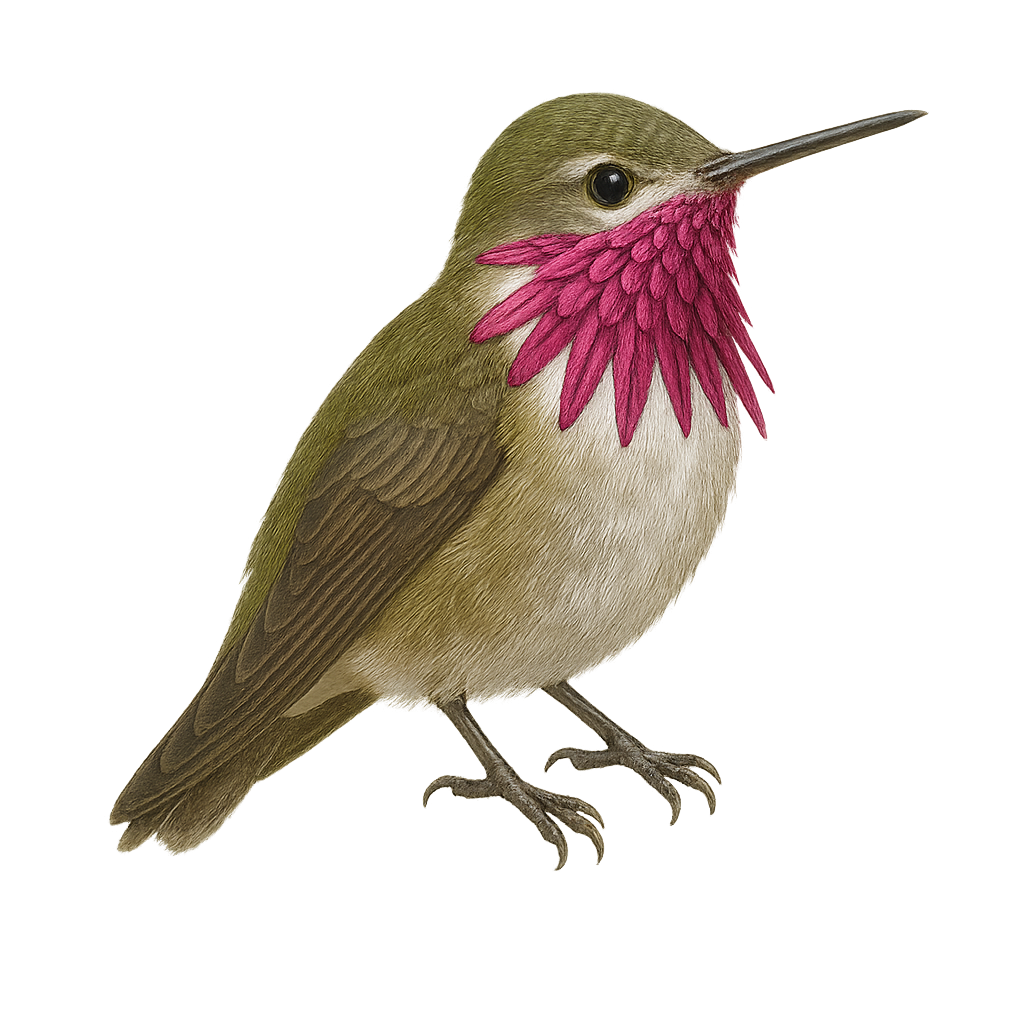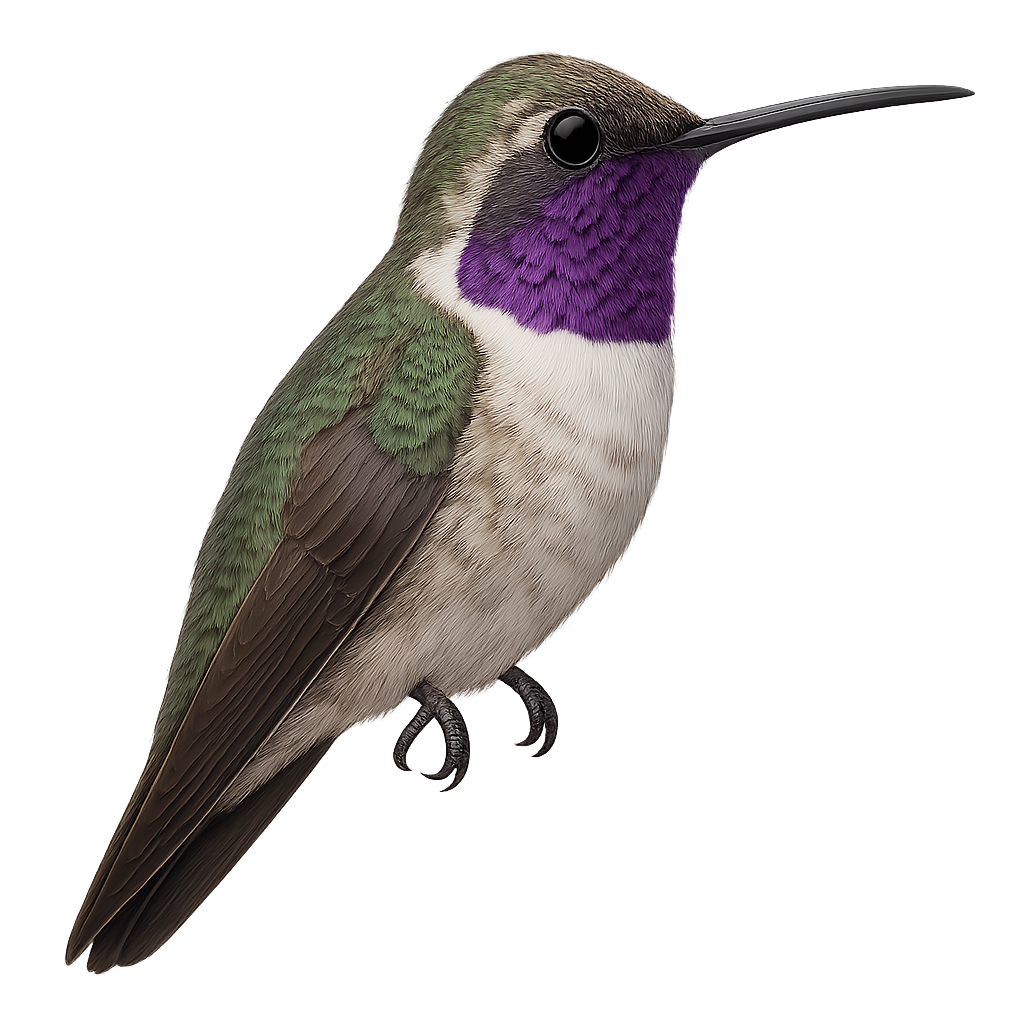The Black-legged Stork, or Ciconia microscelis, is a large African wading bird with an elegant appearance, easily recognized by its pure white plumage, black wings, and dark legs. It is found mainly in sub-Saharan Africa, inhabiting moist savannas, marshes, and riverbanks. Usually seen alone or in pairs, it feeds on fish, amphibians, aquatic insects, and occasionally small reptiles. Its discreet behavior and wide range mean it remains relatively understudied. The species is generally considered stable, though local populations may be affected by wetland degradation.
The White Stork is a large bird easily recognized by its slender silhouette, bright white plumage, and long red legs. It has a long pointed beak, which it primarily uses to capture prey in wetlands, meadows, and fields. This migratory bird travels thousands of kilometers each year, migrating from Eastern and Central Europe to Africa for the winter.
The White Stork primarily feeds on small mammals, amphibians, insects, and small birds, which it captures with its great ability to walk and forage through grass or mud. While it is a solitary bird during breeding, it gathers in large colonies during migrations. Although its population remains stable in many parts of Europe, it faces threats from habitat loss, hunting, and human disturbances. Conservation efforts are underway to protect this iconic species.
The Abdim's Stork, scientifically known as Ciconia abdimii, is a bird species belonging to the Ciconiidae family. It is easily identifiable by its black and white plumage, grey bill, and red legs. This stork is mainly found in sub-Saharan Africa, where it inhabits savannas, grasslands, and wetlands. It is migratory and moves in large colonies. The Abdim's Stork feeds primarily on insects, small reptiles, and amphibians. It is known for its social behavior and tolerance of human presence. Although its conservation status is currently "least concern," it remains vulnerable to environmental changes and habitat loss.
The Storm's Stork, or Ciconia stormi, is a rare species of stork found primarily in the tropical rainforests of Borneo and Sumatra. It is distinguished by its black and white plumage, reddish beak, and long legs. This stork is particularly elusive and difficult to observe, making its study complex. It feeds mainly on fish, frogs, and insects, which it captures in shallow waters. Habitat destruction poses a major threat to its survival, and it is currently classified as critically endangered by the IUCN. Conservation efforts focus on protecting its habitats and raising awareness among local populations.
The Woolly-necked Stork, or Ciconia episcopus, is a majestic and imposing bird, easily recognizable by its distinctive black and white plumage and woolly neck. It primarily inhabits wetlands, marshes, and rivers in South and Southeast Asia, as well as some regions of Africa. Measuring between 80 and 94 cm in height, it has a long, pointed beak, ideal for capturing its food, which mainly consists of fish, amphibians, and insects. Although often solitary, it can be observed in small groups during the breeding season. The Woolly-necked Stork is a diurnal bird, active mainly during the day, and is known for its ability to cover long distances in flight.
The Maguari Stork, or Ciconia maguari, is a large wading bird known for its striking white plumage and black wings. It has a long reddish bill and slender legs, allowing it to move gracefully through wetlands. Predominantly found in South America, it inhabits marshes, flooded grasslands, and riverbanks. The Maguari Stork is a gregarious bird, often seen in small groups. It primarily feeds on fish, amphibians, and aquatic insects. Although its conservation status is currently "least concern," habitat destruction poses a potential threat.
The Black Stork is a large bird with dark, glossy plumage, characterized by its slender silhouette and long red legs and beak. Its plumage is primarily black, with a slight greenish tint and a metallic sheen on the wings and back. This migratory raptor is distinguished from its cousin, the White Stork, by its more discreet behavior and preference for wilder habitats. It primarily inhabits dense forests, wetlands, and mountainous areas of Eastern and Southeastern Europe and Asia.
The Black Stork primarily feeds on fish, amphibians, and small mammals, which it catches with its long beak while moving silently near rivers and lakes. Unlike the White Stork, it prefers isolated habitats, avoiding human areas. Its population has long been in decline due to deforestation, illegal hunting, and disturbance of its breeding habitats. However, conservation efforts have helped stabilize its populations in some regions.
The Oriental Stork, Ciconia boyciana, is a large wading bird belonging to the Ciconiidae family. It is characterized by its striking white plumage contrasted with black wings and a long black bill. Standing about 110 to 115 cm tall, it boasts an impressive wingspan of up to 2 meters. This species is primarily found in East Asia, particularly in China, Russia, and Japan. It inhabits wetlands, marshes, and rice paddies, feeding on fish, amphibians, and insects. The Oriental Stork is an endangered species, mainly due to habitat loss and pollution. Conservation efforts are underway to protect this iconic species.
The White-throated Dipper is a small aquatic bird, easily recognized by its dark plumage, compact body, and characteristic posture, often seen bobbing on rocks at the edge of streams. It has brownish plumage on its back and a white chest, with a short, powerful beak. This small bird is perfectly adapted to aquatic life, thanks to its webbed feet that allow it to swim and dive underwater in search of food.
The White-throated Dipper primarily feeds on aquatic insects, larvae, and small fish, which it captures by diving into rivers and streams. It is capable of swimming underwater and moving along the riverbed to search for prey. Although this bird is generally solitary, it can be observed in clear river or stream habitats, primarily in Europe and Asia. While it is generally not threatened, it can be impacted by water pollution and the disruption of its natural habitats.
The White-bellied Cinclodes is a medium-sized bird, easily identified by its dark brown plumage contrasting with its pure white belly. It primarily inhabits Andean regions, feeding on insects and small invertebrates found by probing the ground with its slender, slightly curved beak. This bird is often seen near streams or in wet grasslands, moving with agility. Although relatively tolerant of human presence, it prefers less frequented areas. Its song is a melodious trill that echoes through the mountains, adding a musical touch to its natural surroundings.
The Taczanowski's Cinclodes is an endemic bird of the Peruvian Andes, primarily found in high-altitude regions. It is recognizable by its dull brown plumage, with lighter shades on the belly and a distinctive white band on the wings. This bird is often seen foraging on the ground for insects and small invertebrates, its main diet. It is well adapted to the harsh mountain conditions, often spotted near streams and wetlands. Although its habitat is limited, it is not currently considered threatened, but habitat degradation could pose future risks.
The Brown Snake Eagle, or Circaetus cinereus, is a medium-sized raptor primarily found in sub-Saharan Africa. It is characterized by its uniform brown plumage and striking yellow eyes. This predator specializes in hunting snakes, capturing them with its keen eyesight and powerful talons. It inhabits savannas, open grasslands, and sparsely wooded areas. Its flight is majestic, often soaring at high altitudes in search of prey. The Brown Snake Eagle is a solitary bird, except during the breeding season when it forms pairs. Although its habitat is extensive, it is sensitive to human disturbances and habitat destruction.
The Short-toed Snake Eagle is a large diurnal raptor, easily recognized by its white and light gray plumage, powerful beak, and large, wide, rounded wings. It is primarily found in open areas, steppes, light forests, and hills across Europe, North Africa, and the Middle East. This raptor is distinguished by its unique hunting habits: it feeds almost exclusively on snakes, which it spots using its keen eyesight.
The Short-toed Snake Eagle mainly preys on snakes, including vipers and grass snakes, which it captures by attacking them in flight or grabbing them on the ground. Once it has captured its prey, it kills it with a powerful beak strike before devouring it. Due to its specialized diet, it is often seen in habitats where snake populations are abundant. Although its population remains relatively stable, it is threatened by habitat loss, human disturbance, and illegal hunting in certain regions.
The Rufous-crowned Cisticola is a small passerine bird belonging to the Cisticolidae family. It is recognizable by its distinctive rufous head and brownish plumage, which allows it to blend into its natural habitat. This bird is primarily found in open grasslands, savannas, and shrublands of sub-Saharan Africa. It is known for its melodious and repetitive song, often heard during the breeding season. The Rufous-crowned Cisticola is an active and agile bird, spending most of its time foraging for food, mainly consisting of insects and small invertebrates. Although relatively common within its range, it can be difficult to spot due to its small size and discreet behavior.
The Chattering Cisticola is a small passerine bird belonging to the Cisticolidae family. It is primarily found in the humid regions of Central and West Africa. This small bird is characterized by its brownish plumage and relatively short tail. Chattering Cisticolas are often identified by their distinctive song, a rapid and repetitive chirping. They mainly feed on insects and small invertebrates, which they find in tall grasses and bushes. Their behavior is generally suspicious, making them difficult to observe closely. They build ball-shaped nests, often well hidden in dense vegetation.
The Zitting Cisticola is a small passerine bird from the Cisticolidae family, often found in wetlands and grasslands. It is recognizable by its brown streaked plumage, short tail, and distinctive song. Measuring about 10 to 12 cm in length, it weighs between 8 and 10 grams. Highly active, it is often seen fluttering above vegetation. Its diet mainly consists of insects and spiders. The Zitting Cisticola is widely distributed across southern Europe, Africa, and South Asia. It builds a cup-shaped nest in tall grasses, where it usually lays 3 to 5 eggs.
The Rattling Cisticola, a small passerine bird from the Cisticolidae family, is widespread in the savannas and grasslands of sub-Saharan Africa. It is characterized by its brownish plumage with dark streaks on the back and a lighter chest. Its tail is relatively short and often held upright. Known for its distinctive call, a repetitive "rattling" sound, this bird is active and often seen hopping from one grass stem to another. It primarily feeds on insects and small invertebrates. Although generally discreet, it becomes more visible and vocal during the breeding season.
The crested lark is a small passerine, 16–18 cm long, with streaked brown plumage and an erectile crest. It inhabits open farmland, steppes, and embankments, often near human settlements across Europe, North Africa, and Western Asia. It feeds mainly on insects and seeds, walking and hopping on the ground. During the breeding season, the male performs a song flight over its territory, uttering a sharp trill while fluttering its wings before landing to attract the female.
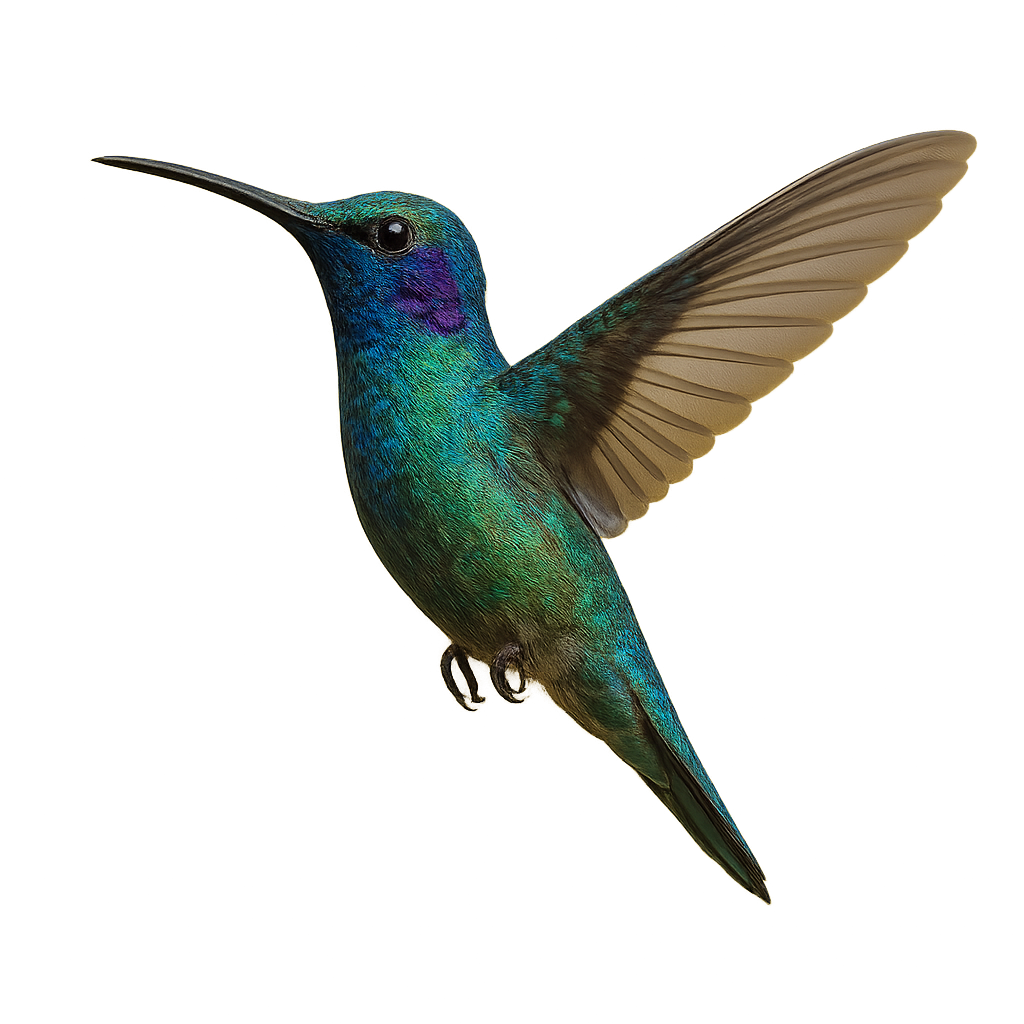
Hummingbirds, members of the Trochilidae family, are small birds exceptionally known for their ability to hover in place due to their rapid and agile wing beats. These birds are characterized by their iridescent plumage, which varies from green and blue to red and purple, depending on the species. Their small size and high energy make them easily recognizable. Hummingbirds are primarily found in tropical and subtropical regions of the Americas, from Canada to the southern parts of South America.
They primarily feed on nectar that they gather from flowers, using their long slender beak and extendable tongue to reach the food. In addition to nectar, they also consume insects and spiders for protein. Due to their high metabolism, they must feed frequently throughout the day. Hummingbirds play a key role in pollinating flowering plants, thus contributing to the biodiversity of their habitats. While their population is generally stable, some species are threatened by habitat loss and climate change.
The Collared Inca, or Coeligena torquata, is a captivating bird of the Andes, easily identifiable by its glossy black plumage and distinctive white collar. It inhabits humid forests and forest edges, where it primarily feeds on nectar. Its swift and agile flight allows it to move effortlessly between flowers. This hummingbird plays a crucial role in the pollination of Andean plants. Although generally solitary, it can be seen in small groups during abundant flowering. Its adaptability to various habitats makes it a resilient species, although deforestation may threaten local populations.
The Blue-backed Thornbill, or Ramphomicron dorsale, is a small hummingbird endemic to the mountainous regions of South America. It is primarily found in humid forests and shrublands at high altitudes. This hummingbird is distinguished by its striking plumage, with a metallic blue back and white belly. Its slender, slightly curved bill is perfectly adapted for feeding on flower nectar. Males often display brighter colors than females, making them particularly attractive to bird watchers. Despite its small size, this hummingbird is an essential pollinator in its natural habitat, contributing to local biodiversity.
The Blue-throated Mountain-gem, or Lampornis clemenciae, is a captivating bird from the Trochilidae family. This medium-sized hummingbird is notable for its striking blue throat in males, while females have a duller throat. Its plumage is primarily green with metallic sheens, and it has a straight, slender bill adapted for nectar collection. It is mainly found in pine and oak forests, as well as mountainous areas of the southwestern United States and Mexico. Known for its rapid and agile flight, it often produces a distinctive humming sound. This hummingbird plays a crucial role in flower pollination, contributing to the biodiversity of its natural habitat.
The Ruby-throated Hummingbird is one of the most iconic species of hummingbirds in North America, easily recognizable by the bright red color of its throat, which gives it its name. This small bird has bright metallic green plumage on its back and a white chest. It has a long, slender beak and an extendable tongue that it uses to extract nectar from flowers. In addition to nectar, it also consumes insects and spiders for protein.
The Ruby-throated Hummingbird is a migratory bird, covering long distances between its breeding range in North America and its wintering grounds in Central America. It is known for its rapid and agile flight, capable of hovering in place by beating its wings up to 80 times per second. While its population remains generally stable, it is threatened by habitat loss due to urbanization and climate change, which affect food resources and breeding conditions.
The White-eared Hummingbird is a small, captivating bird primarily found in the pine and oak forests of Mexico and Central America. It is distinguished by its characteristic white ears, contrasting with its metallic green plumage. This hummingbird measures about 9 to 10 cm in length and weighs between 3 and 4 grams. It primarily feeds on nectar but also consumes small insects to supplement its diet. Its flight is fast and agile, allowing it to maneuver easily among flowers. The White-eared Hummingbird is often observed alone or in small groups, and it vigorously defends its feeding territory against intruders.
The Purple-backed Thornbill, scientifically known as Ramphomicron microrhynchum, is a captivating bird belonging to the Trochilidae family. This hummingbird is noted for its vibrant plumage and agile flight behaviors. It is primarily found in the humid forests and mountainous regions of the Andes, where it feeds on nectar and insects. Its short bill is particularly adapted to accessing tubular flowers. Despite its small size, it plays a crucial role in the pollination of local plants. Its ability to fly backward and hover is remarkable. The Purple-backed Thornbill is a perfect example of evolutionary adaptation to specific environments, illustrating the diversity and beauty of South American avian fauna.
The Scissor-tailed Hummingbird, or Hylonympha macrocerca, is a hummingbird species endemic to Venezuela, specifically the Sierra de San Luis region. This small bird is recognizable by its long, scimitar-shaped tail, giving it an elegant and unique appearance. Its plumage is primarily emerald green with metallic sheens, while its throat displays a striking violet hue. Males and females exhibit notable differences, particularly in tail length, which is more pronounced in males. This hummingbird primarily inhabits humid forests and mountainous areas, where it feeds mainly on nectar, but also on small insects. Unfortunately, this species is considered vulnerable due to deforestation and the loss of its natural habitat.
The Fork-tailed Woodnymph, or Thalurania furcata, is a captivating bird found in the tropical forests of South America. This small hummingbird is known for its dazzling plumage, featuring metallic green and blue hues. Males display a distinctive forked tail, while females have a more subdued appearance. They primarily feed on nectar, which they extract while hovering from flower to flower, but they also consume small insects to supplement their diet. Their fast and agile flight allows them to maneuver easily among branches and flowers. These birds are often seen in dense undergrowth and tropical gardens, where they play a crucial role in plant pollination.
The Coppery-headed Emerald is a small hummingbird endemic to Costa Rica, measuring about 8 cm. The male is notable for his metallic coppery crown, bright green throat, and white underparts. The female is duller in color, with a bronzy head and pale throat. It inhabits humid mid-elevation forests, woodland edges, and flower-rich gardens. This hummingbird feeds on nectar from various flowers and catches small insects. It is threatened by deforestation, as its range is very restricted.
The Calliope Hummingbird is the smallest bird in North America, measuring about 7 to 10 cm in length. It is easily recognizable by the iridescent purple throat of the male, while the female has a white throat with green streaks. This hummingbird primarily inhabits coniferous forests, alpine meadows, and shrublands. It feeds mainly on nectar but also consumes insects to supplement its diet. During the breeding season, the male performs spectacular aerial displays to attract the female. The Calliope Hummingbird migrates to the southern United States and Mexico for the winter.
The Calothorax pulcher, or beautiful sheartail, is a small hummingbird known for its striking appearance and behavior. This hummingbird is distinguished by its vibrant plumage, featuring metallic green and bright pink hues, especially in males. It is primarily found in the arid and semi-arid regions of Mexico, frequenting scrublands and open forests. This hummingbird is an essential pollinator, feeding on flower nectar with its long, slender beak. It plays a crucial role in the ecosystem by aiding in cross-pollination of plants. Although generally solitary, the beautiful sheartail can be seen in small groups during the breeding season. Its aerial dance is a captivating spectacle, combining agility and speed.



